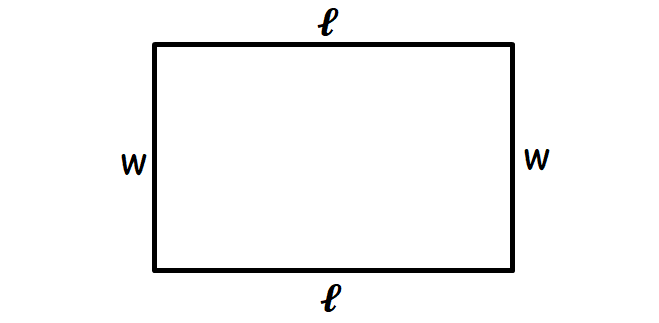HOW TO FIND MAXIMUM AND MINIMUM VALUE OF A FUNCTION
Subscribe to our ▶️ YouTube channel 🔴 for the latest videos, updates, and tips.
The following steps would be useful to find the maximum and minimum value of a function using first and second derivatives.
Step 1 :
Let f(x) be a function. Find the first derivative of f(x), which is f'(x).
Step 2 :
Equate the first derivative f'(x) to zero and solve for x, which are called critical numbers.
Step 3 :
Find the second derivative of f(x), which is f"(x).
Step 4 :
Substitute the critical numbers found in step 2 in the second derivative f"(x).
Step 5 :
If f"(x) < 0 for some value of x, say x = a, then the function f(x) is maximum at x = a.
If f"(x) > 0 for some value of x, say x = b, then the function f(x) is minimum at x = b.
Step 6 :
To get maximum and minimum values of the function substitute x = a and x = b in f(x).
Maximum value = f(a)
Minimum value = f(b)
Example 1 :
Determine the maximum value of the function :
f(x) = 4x - x2 + 3
Solution :
Find the first derivative of f(x).
f'(x) = 4(1) - 2x + 0
= 4 - 2x
Equate the first derivative to zero, that is f'(x) = 0.
4 - 2x = 0
2(2 - x) = 0
2 - x = 0
x = 2
Find the second derivative of f(x).
f'(x) = 4 - 2x
f"(x) = 0 - 2(1)
f"(x) = -2
Substitute the critical number x = 2 in f"(x).
f"(2) = -2 < 0
So, f(x) is maximum at x = 2.
To find the maximum value, substitute x = 2 in f(x).
f(2) = 4(2) - 22 + 3
= 8 - 4 + 3
= 11 - 4
= 7
Therefore the maximum value of the function f(x) is 7.
Justification :
We can justify our answer by graphing the function f(x).
f(x) = 4x - x2 + 3
The given function is the equation of parabola. Replace f(x) by y.
y = -x2 + 4 x + 3
Write the above equation of parabola in vertex form.
y = -(x2 - 4 x - 3)
y = -[x2 - 2(x)(2) + 22 - 22 - 3]
y = -[(x - 2)2 - 4 - 3]
y = -[(x - 2)2 - 7]
y = -(x - 2)2 + 7
The above equation is in the form y = a(x - h)2 + k.
a = -1
Vertex (h, k) = (2, 7)
Because 'a' is negative the parabola opens down. So, we have only the maximum value for y, that is the y-coordinate at the vertex, which is 7.
The answer is justified.
Example 2 :
Determine the maximum and minimum values of the function :
f(x) = 2x3 + 3x2 - 36x + 1
Solution :
Find the first derivative of f(x).
f'(x) = 2(3x2) + 3(2x) - 36(1) + 0
= 6x2 + 6x - 36
Equate the first derivative to zero, that is f'(x) = 0.
6x2 + 6x - 36 = 0
Divide both sides by 6.
x2 + x - 6 = 0
Factor and solve.
(x - 2)(x + 3) = 0
|
x - 2 = 0 x = 2 |
x + 3 = 0 x = -3 |
Find the second derivative of f(x).
f'(x) = 6x2 + 6x - 36
f"(x) = 6(2x) + 6(1) - 0
f"(x) = 12x + 6
Substitute the critical numbers x = 2 and x = -3 in f"(x).
|
f"(2) = 12(2) + 6 = 24 + 6 = 30 > 0 |
f"(-3) = 12(-3) + 6 = -36 + 6 = -30 < 0 |
When x = 2, f"(x) > 0, the function f(x) is minimum at
x = 2
When x = -3, f"(x) > 0, the function f(x) is maximum at
x = -3
To find the maximum and minimum values of the given function, substitute x = -3 and x = 2 in f(x).
Maximum value :
f(-3) = 2(-3)3 + 3(-3)2 - 36(-3) + 1
= 2(-27) + 3(9) + 108 + 1
= -54 + 27 + 108 + 1
= 82
Minimum value :
f(2) = 2(2)3 + 3(2)2 - 36(2) + 1
= 2(8) + 3(4) - 72 + 1
= 16 + 12 - 72 + 1
= -43
Example 3 :
Mona has 400 yards of fencing to enclose a rectangular area. Find the dimensions of the rectangle that maximize the enclosed area. What is the maximum area?
Solution :
Let 𝓵 and w be the length and width of the rectangle respectively.

Total length of fence = 400 yards
2𝓵 + 2w = 400
Divide both sides by 2.
𝓵 + w = 200
Subtract w from both sides.
𝓵 = 200 - w ----(1)
Area of a rectangle = 𝓵 ⋅ w
= (200 - w) ⋅ w
= 200w - w2
Let A(w) be the area of the rectangle.
A(w) = = 200w - w2 ----(2)
Find the first derivative of A(w).
A'(w) = 200 - 2w
Equate the first derivative to zero and solve for w, which is called critical number.
200 - 2w = 0
-2w = -200
w = 100
Find the second derivative of A(w).
A'(w) = 200 - 2w
A"(w) = -2
Substitute the critical number w = 100 in A"(w).
A"(100) = -2 < 0
So, A(w) is maximum at w = 100.
Substitute w = 100 into (1).
𝓵 = 200 - 100
𝓵 = 100
The area is maximum when
length = 100 yards
width = 100 yards
To find the maximum area, substitute w = 100 into (2).
A(100) = 200(100) - 1002
= 20000 - 10000
= 10000
Therefore, the maximum area is 10000 square yards.
Example 4 :
The sum of two numbers is 10. Find the smallest possible value for the sum of their squares.
Solution :
Let x and y be the two numbers.
x + y = 10
y = 10 - x ----(1)
Sum of their squares :
= x2 + y2
= x2 + (10 - x)2
= x2 + 102 - 2(10)(x) + x2
= x2 + 100 - 20x + x2
= 2x2 - 20x + 100
Let S(x) be the sum of the their squares.
S(x) = 2x2 - 20x + 100
Find the first derivative of P(x).
S'(x) = 4x - 20
Find the second derivative of P(x).
S"(x) = 4
Equate the first derivative to zero and solve for x, which is called critical number.
S'(x) = 0
4x - 20 = 0
4x = 20
x = 5
Substitute x = 5 into S"(x) = 4.
S"(5) = 4
S"(5) = 4 > 0
So, S(x) is minimum at x = 4.
Subsitute x = 5 into (1).
y = 10 - 5
y = 5
When the two numbers are 5 and 5, the sum of their squares is minimum.
The smallest possible value for the sum of their squares :
= 52 + 52
= 25 + 25
= 50
Example 5 :
The total cost of a firm is
where C(x) is the total cost and x is output. A tax at a rate of $2 per unit of output is imposed and the producer adds it to his cost. If the market demand function is given by
p = 2530 - 5x
where p is the price per unit of output in dollars, find the profit maximising output and price for maximum profit.
Solution :
Since a tax of $2 per unit of output is imposed, the total tax for x units of output is 2x. The producer adds this tax to his cost.
Then, the total new cost is
Let R(x) be the revenue for the ouput of x units.
Revenue : Price x Output
R(x) = (2530 - 5x)x
R(x) = 2530x - 5x2
Let P(x) be the profit for the ouput of x units.
Profit = Revenue - Total Cost
P(x) = R(x) - C(x)
Find the first derivative of P(x).
P'(x) = -x2 + 2500
Find the second derivative of P(x).
P"(x) = -2x
Equate the first derivative to zero and solve for x, which is called critical number.
P'(x) = 0
-x2 + 2500 = 0
-x2 = -2500
x2 = 2500
x = ± 50
x = -50 or 50
Output can never be a negative value.
So, x = 50.
Substitute x = 50 into P"(x) = -2x.
P"(50) = -2(50)
P"(50) = -100 < 0
So, P(x) is maximum at x = 50.
Therefore, profit maximising output is 50 units.
Subsitute x = 50 into demand function p = 2530 - 5x.
p = 2530 - 5(50)
p = 2530 - 250
p = 2280
Therefore, the price for maximum profit is $2280.
Subscribe to our ▶️ YouTube channel 🔴 for the latest videos, updates, and tips.
Kindly mail your feedback to v4formath@gmail.com
We always appreciate your feedback.
About Us | Contact Us | Privacy Policy
©All rights reserved. onlinemath4all.com

Recent Articles
-
10 Hard SAT Math Questions (Part - 39)
Dec 28, 25 11:20 PM
10 Hard SAT Math Questions (Part - 39) -
10 Hard SAT Math Questions (Part - 41)
Dec 28, 25 06:05 PM
10 Hard SAT Math Questions (Part - 41) -
GMAT Quantitative Reasoning Questions and Answers
Dec 27, 25 09:33 PM
GMAT Quantitative Reasoning Questions and Answers
